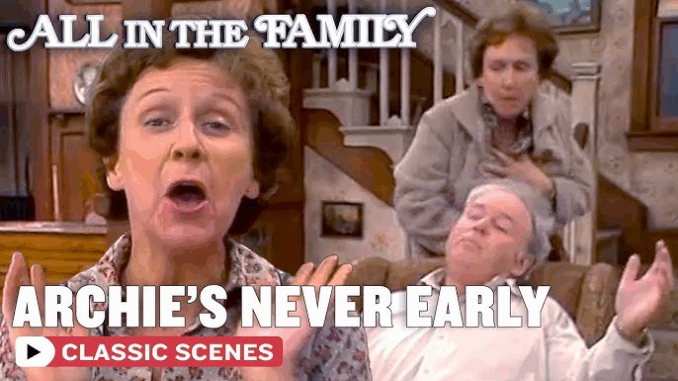
efore All in the Family, the American sitcom was a safe haven—domestic, cheerful, and comfortably detached from the real world. But with the debut of Norman Lear’s audacious comedy in 1971, the genre took a sharp, revolutionary turn. Suddenly, the living room wasn’t just a setting for laughs. It became a battleground for ideas, identity, and ideology.
At the core of All in the Family was an extraordinary commitment to authenticity. The show’s strength didn’t lie in complex plots or flashy production—it thrived on raw, often uncomfortable dialogue. Every episode played like a stage play: a handful of characters in a confined space, trading barbs and beliefs over meatloaf or newspapers. It was intimate. It was relentless. And it was unlike anything television had seen before.
Archie Bunker, portrayed with impeccable depth by Carroll O’Connor, wasn’t a villain. He was a man molded by his environment—afraid of change, clinging to what he knew, and often undone by his own contradictions. His foil, son-in-law Mike Stivic (Rob Reiner), brought the counterculture voice of youth, education, and protest. Their frequent clashes were more than comedic gold—they were ideological boxing matches, written with wit and weight.
What set All in the Family apart was its refusal to offer easy answers. The show rarely resolved its conflicts neatly. Instead, it trusted its audience to grapple with the messiness. And audiences responded—sometimes with laughter, sometimes with outrage, but always with engagement. It was a sitcom that asked viewers to think, not just to relax.
Jean Stapleton’s Edith was the emotional glue of the series—gentle, loyal, and often underestimated. Her occasional moments of clarity or quiet rebellion revealed a subtle feminism that was revolutionary in its own right. Meanwhile, Sally Struthers’s Gloria provided a bridge between her husband’s activism and her father’s conservatism, giving voice to a generation caught in the middle.
Fifty years later, the show’s format feels almost radical again. In an era of fast cuts, plot twists, and streaming binge culture, All in the Family reminds us of the power of a well-crafted conversation. It proves that a living room, a recliner, and a few opposing views can still make the most compelling television.
